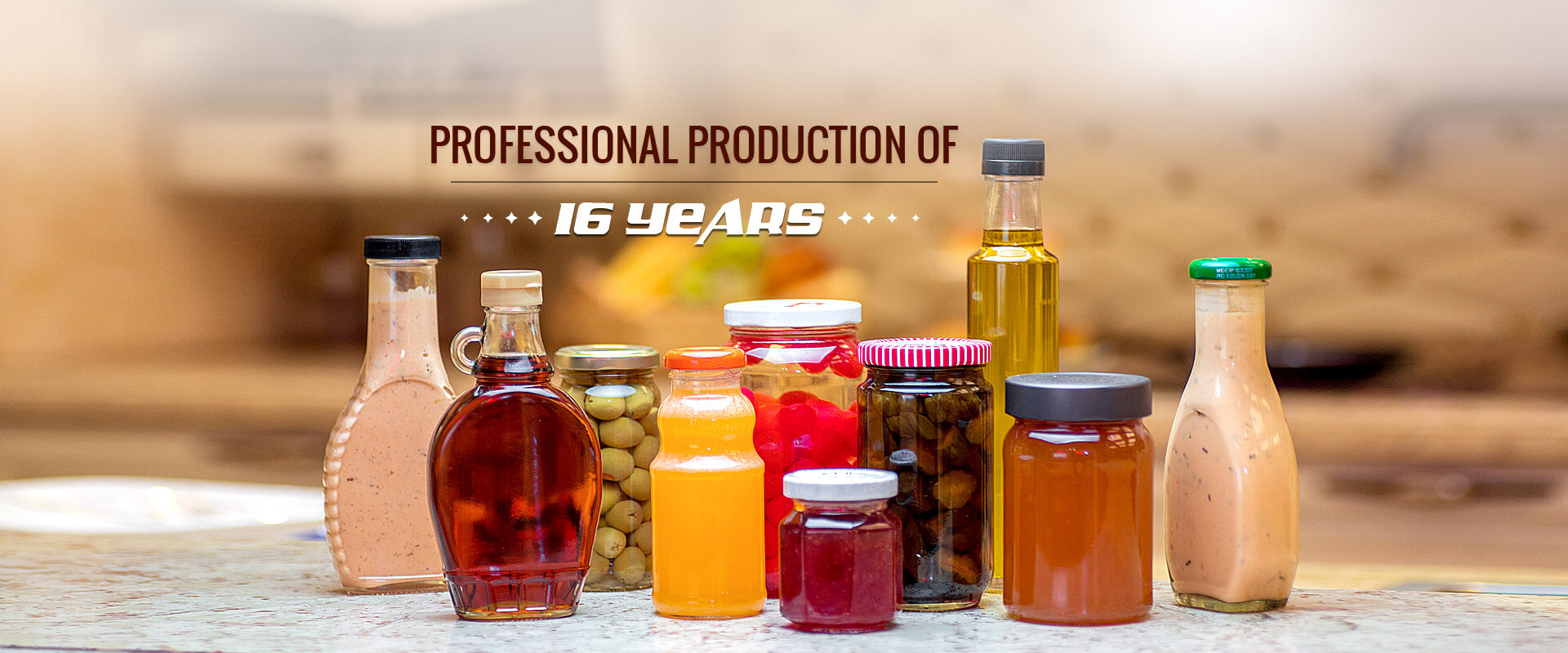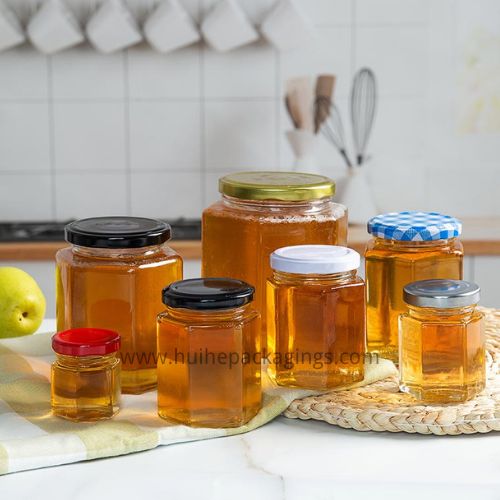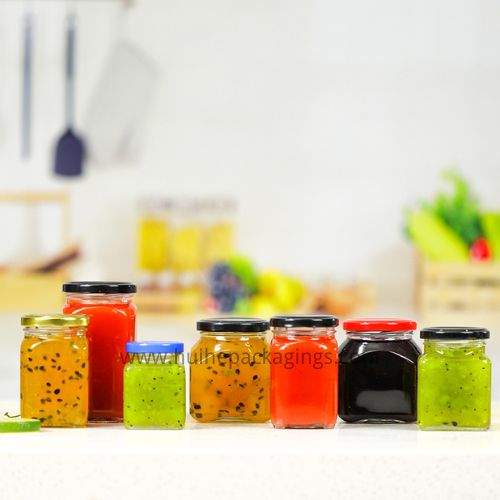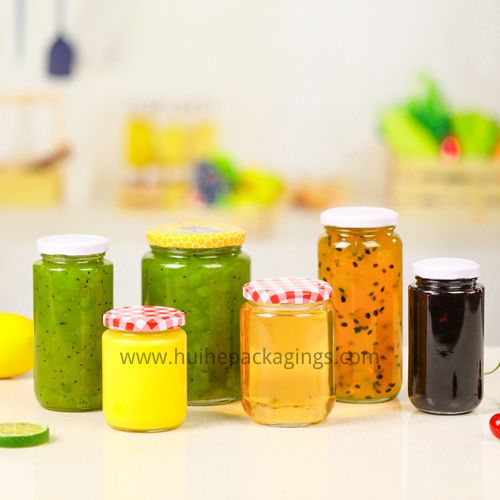
In the food industry, the role of food jars cannot be ignored. It not only protects food, preventing deterioration and contamination but also greatly facilitates the storage and transportation of food. At the same time, unique and exquisite food jar design can also enhance the brand image of the product, attract consumers' eyes, and further stimulate their desire to buy. As a key food packaging container, food jars provide an efficient and reliable solution for food storage and transportation through their unique manufacturing process and diverse types. In this article, we will provide you with detailed information about food jars and the development trend of food jars.
Environmentalization: With the growing awareness of global environmental protection, the development trend of environmental protection of food jars is also becoming more and more obvious. This is mainly manifested in two aspects: the food jars of materials tend to use recyclable materials, such as glass jars.; second, the food jars of the manufacturing process tend to reduce environmental pollution.
Intelligent: Intellectualization is another important development trend of food jars in the future. By adding smart chips, sensors, and other devices to food jars, thoughtful management of food jars can be realized, such as tracking the supply chain information of food and monitoring the shelf life of food. This will help safeguard food safety and improve consumer trust.
Personalization: Customized food jar is an important trend in the current consumer market. In the future, the design of food jars will focus more on personalization to meet the needs of different consumers. For example, customized patterns, colors, and shapes can make food canisters more attractive.
Multifunctionalization: Multifunctionalization is another important trend of food jars in the future. In addition to the traditional storage function, food jars can also add many other functions, such as preservation of freshness, antibacterial, anti-counterfeiting, and so on. These functions jars improve the quality and safety of food and meet consumer demand for healthy food.
Miniaturization: With the accelerated pace of life, people's consumption habits of food are also changing. To facilitate carrying and consumption, the trend of miniaturization of food jars is becoming more and more obvious. Miniaturized food jars can not only meet the needs of consumers but also reduce the generation of packaging waste, which is conducive to environmental protection.
Glass jar: A glass jar is a common food storage jar with the advantages of transparency, no deformation, and no effect on food. The transparent body of the jar can facilitate our observation of the state of the food and also prevent the generation of odor. At the same time, glass food jars are easy to clean, and will not produce chemical reactions for food rich in acidic components, so they are very suitable for storing all kinds of food, especially dried fruits, candies, spices, and so on.
Ceramic jar: Ceramic jars are widely used for their exquisite appearance and excellent heat preservation performance. Compared with glass jars, ceramic jars are more decorative and beautiful. At the same time, ceramic containers will not hurt food, and insulation performance is relatively good. But ceramic jars are after all a fragile product, the use of the need to pay attention to fall, only suitable for storing dry food.
Stainless steel containers are very durable, rust-proof food storage jars. Stainless steel containers have a smooth surface, are easy to clean, and do not have chemical reactions to acidic foods or strongly oxidizing foods. In addition, stainless steel jars have the advantages of higher durability and moisture resistance. However, stainless steel canisters are opaque and cannot visualize the state of the food. When using stainless steel jars, you need to be careful not to mix strong alkaline food and acidic food.
Plastic jar: Plastic is a very lightweight material, which makes it easy to handle, store, produce, and transport, reducing the cost and carbon footprint of these steps. In addition, plastic jars are typically less expensive to produce and purchase than glass jars. Their resistance to impact and drops also reduces the risk of breakage and product loss. However, plastic jars have some drawbacks. They are less suitable for products that need to be sterilized or stored at high temperatures due to their lower heat resistance.
As environmental impact continues to rise, sustainability remains a top priority for many consumers, driving decisions within the branded packaging industry. Food manufacturers are actively seeking packaging options that help reduce environmental impact and overall waste. In the food market, glass jars are the most commonly used primary packaging solution.
On average, glass bottles made in the United States contain about 30 percent recyclable glass. Another feature that combines glass packaging with the SDGs is its life cycle use. The recycled nature of glass bottles further enhances the appeal of glass as a packaging option - it is 100 percent infinitely recyclable. Glass does not degrade over time and is generally recycled close to nearby and regional markets.
Overall, glass jars are better than plastic jars. Glass storage jars are more resistant to oxidation, corrosion, aging, and high temperatures than plastic storage jars, so it is safer to use glass storage jars to store food, herbs, or pickled food than plastic storage jars. Especially after using plastic storage jars to pickle food, the storage jar will be left inside the odor and food color, not easy to clean. Glass jars are easier to clean and less likely to have odors. However, because glass storage jars are made of fragile glass material, the handling and operation process is also more careful than plastic storage jars, it is not as lightweight and portable as plastic storage jars.
Food safe: Glass jars do not contain harmful substances, so they do not pollute the food, do not release chemical ingredients, and ensure the original flavor of the food, while plastic and tin jars will ingredients gradually seep out to pollute the food, affecting the taste and nutritional value of the food. Therefore, glass canisters are more and more widely used in the food industry.
High-temperature resistance: Glass jars have high thermal stability can withstand high temperatures and will not dissolve or deform due to high temperatures. Therefore, glass jars are suitable for sauces, jams, preserved fruits, and other high-confectionery foods with better preservation effects.
High transparency: glass food canisters are transparent, you can see the food inside the canister from the outside, it looks beautiful and generous, and can improve the consumer shopping experience.
Environmentally responsible: Glass jars are reusable and can be used in multiple cycles, which reduces the generation of waste, saves resources, reduces the pressure on nature, and is a more environmentally friendly packaging material that meets the needs of sustainable development.



Improving resource efficiency: Food jar producers are working to improve resource efficiency by optimizing production processes, reducing waste, and adopting technologies for efficient energy use. For example, reliance on finite resources is being reduced through improved production processes, reduced material consumption during production, and the use of renewable or recyclable materials.
Reducing environmental impact: The production and use of food jars have certain environmental impacts, such as waste disposal and energy consumption. The industry is working to reduce the negative impact on the environment by adopting environmentally friendly materials, improving packaging design, and optimizing logistics. In addition, the pressure of waste on the environment is being reduced by recycling and reusing old jars.
Promoting Circular Economy: The food jar industry is promoting the development of a circular economy and the recycling of resources by establishing a recycling system, increasing the recycling rate, and promoting reuse technologies. This not only helps reduce the consumption of raw materials but also reduces production costs and improves economic efficiency.
Adoption of innovative technology: with the progress of science and technology, the food jar industry is also innovating and adopting new technologies and materials, such as biodegradable materials and nanotechnology, to reduce the burden on the environment. The application of these technologies not only helps to improve the environmental performance of the products but also enhances the functionality and safety of the products.
Lightweight food jars: Lightweight glass jars by reducing the weight-to-volume ratio of glass bottles, individual products are lighter in weight, making it possible to make as many products as possible with limited energy in the production process, greatly reducing manufacturing costs.
The food jar packaging industry faces opportunities and challenges in terms of growing market demand, technological innovation, and sustainable development. Food jar manufacturers need to seize market opportunities, strengthen technological innovation, and meet the challenges of sustainable development to achieve sustainable development and maintain a competitive advantage.